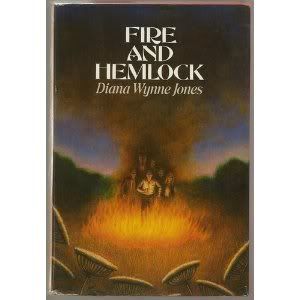First off, please don't get me wrong. The man's a genius. Ed Tufte's books really are glorious explications of unspoken rules and structures in a world (information graphics) that's supposed to be all about clarity but is surprisingly opaque even to its experienced practitioners.
They're also a treasure trove of examples of information graphics and how to make them clearer.
I've been realizing as I revisit Tufte that his foundational structure is pretty well laid out in
The Visual Display of Quantitative Information, the first of his "picture books". The other three books are essentially collections of add-on essays. There may be themes running through the books, but really each chapter stands alone quite well, referring to the original book and to other essays from all four volumes.
I was struck by a few other things:
1. data and textureIn Beautiful Evidence, in the chapter on "
sparklines", he evokes the intensity of linework in older western artists, using a sample from a Dürer
engraving. He evokes it, but I think he mis-describes it. In Tufte's vision, all marks are information—all ink is data. Tufte evokes the Renaissance artist and then moves on to Swiss mountain cartgoraphy, with its similarly intense linework, implying that the Swiss are in the same business.
It's revealing that Tufte chose Dürer to evoke instead of, for example, Rembrandt. Dürer, to our eyes, is fussy; the intensely engraved lines at once read as texture and as information: every mark has a feeling of intent, and the sum is a rich picture, full of recognizeable detail but still forming a coherent statement as a whole.
Rembrandt's etchings are no less detailed, and form no less of a statement, but each mark does not imply data in the same way Dürer can seem to. Rembrandt's marks, especially as he matured, are about texture. In the map world, we know that's a lot of what pulls a map together: texture. We want it to be meaningful, for that texture to itself carry meaning, but we need to remember that the holding-together of the map is what it's really there for, and that at a certain level it no longer carries specific data-meaning: at one scale the wobbles of a river-line are traced precisely, but at a certain point they only mean "the river isn't straight." They are texture, not data.
2. ridiculeI was struck at how Tufte uses ridicule as a weapon against the "enemy": Clarity is good, confusion is bad. If you're going to intentionally create a muddle, make it a
clear muddle. And he picks good targets: the
ineffective decision-making that led to the Challenger explosion,
Powerpoint's limitations...
Here's the problem:
If we become afraid of ridicule, we will not push ourselves. Sometimes, like when launching a hugely expensive piece of equipment into outer space with seven humans aboard, careful is a really really good idea. But not all charts and statistics should carry this sort of load. That no-fun attitude is, maybe, why cartography ends up feeling so stilted sometimes.
I'm a believer in
Sturgeon's Law, “Ninety percent of everything is
crap.” Theodore Sturgeon was a science fiction writer. From Wikipedia:
The meaning of Sturgeon’s Law was explicitly detailed by Sturgeon himself. He made his original remarks in direct response to attacks against science fiction that used “the worst examples of the field for ammunition”. Using the same standards that categorize 90% of science fiction as trash, crud, or crap, it can be argued that 90% of film, literature, consumer goods, etc. are crap. In other words, the claim (or fact) that 90% of science fiction is crud is ultimately uninformative, because science fiction conforms to the same trends of quality as all other artforms do.
From my point of view, Tufte in using ridicule to fight against what he calls "chartjunk" is also throwing out the baby with the bathwater.
What baby? What bathwater?
3. In defense of texture and the BaroqueTufte points to a
graphic like this first in
Envisioning Information as an example of an interesting use of simplification and distortion to allow comparison. Later, in
Beautiful Evidence, he ridicules it for having all that extra texture, the knobby lakes and so forth. To me, this is a really beautiful and interesting graphic, something to strive for, not an eccentric maiden aunt. That texture and those extra squiggles don't communicate Really Useful Data, but they do present part of a sense of identity and character.
Tufte attacks information graphics with unnecessary framing, or with editorial illustration, and he uses egregious examples to do it with. But like Sturgeon says, there's lots of crap to go around. I want to look at some baroque graphics that
work. Like the river-comparison chart, or historic illustrated maps. Tufte repeatedly quotes Jonathan Swift: "So, geographers in Afric maps,/With savage pictures fill their gaps/And o'er unhabitable downs/Place elephants for want of towns.").
You know, I like the elephants. I like illustrated maps
when they are done well. There are lots of badly done "plain" maps, and Tufte is at his best when he's giving us a theoretical framework to work within in building that sort of graphic, but I think he falls down when he turns around and says that that sort of graphic is
superior to baroque graphics.
Over and out for now.

